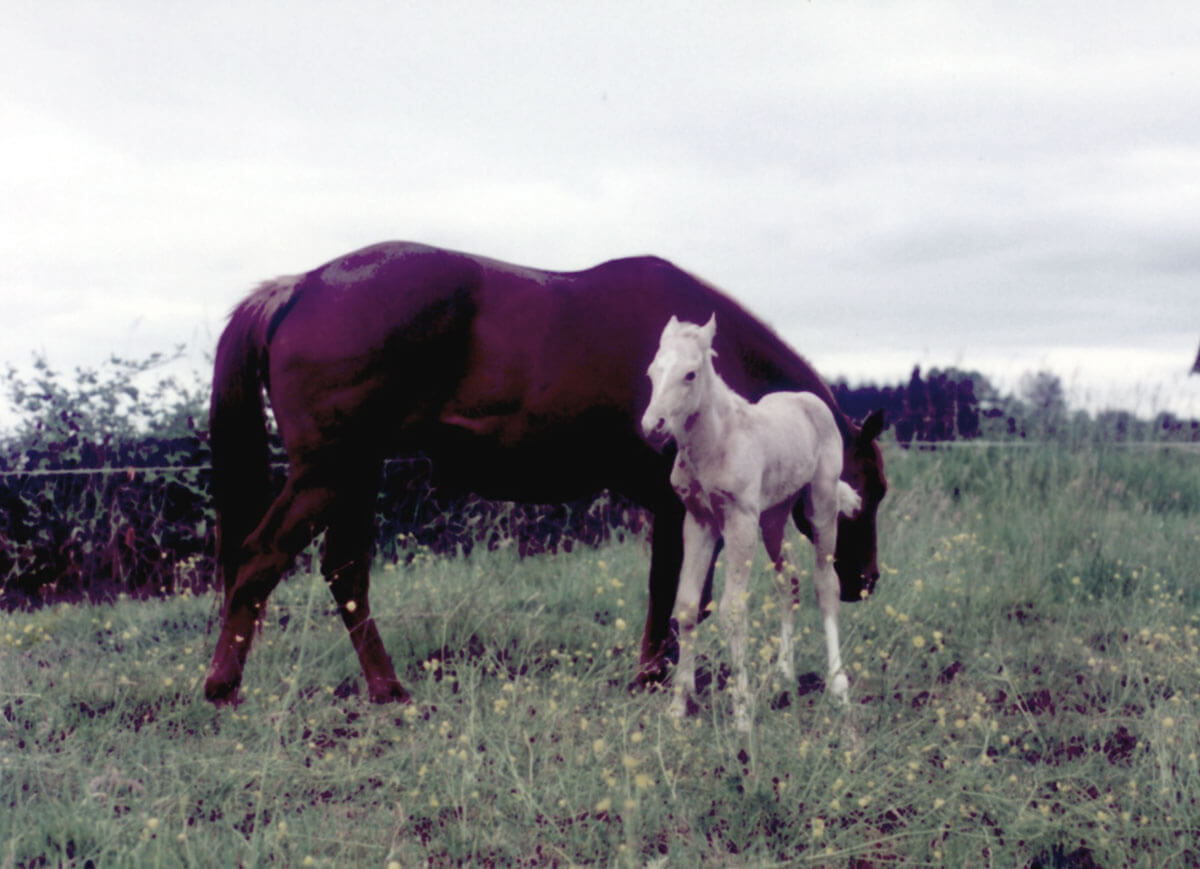Information provided by Kulshan Veterinary Hospital
What is Meconium?
Meconium consists of glandular secretions, swallowed amniotic fluid and other cell debris. Before birth it is stored in the colon and rectum. Meconium is usually dark brown to black and may be found in hard pellets or in a more paste-like mass. A change to a light brown to yellowish color and a change in consistency to more mucus-like stool generally indicates that all of the meconium has passed.
How long does it take to pass the meconium?
Most foals start passing the meconium within a couple of hours of birth. Most foals start after they have nursed well for the first time. It seems the colostrum stimulates them to try and defecate. Occasionally, the urge to defecate interferes with their ability to nurse. Generally, all the meconium is passed within 12 hours.
Why is the passage of meconium so important?
Meconium impaction is the most common cause of colic in the newborn foal and is extremely stressful on the newborn creating a major setback during a very critical and vulnerable stage of life.
Enema Administration to Newborn Foals
Medical opinions on the routine use of enemas in newborn foals vary. The intent is to prevent meconium impactions and to reduce the straining and discomfort associated with meconium passage. As with any type of procedure, there are risks involved. The lining of the rectum in the foal is this and can be bruised or even torn by awkward, careless or inappropriate administration. The most important step is to properly restrain the foal. Administering an enema to a newborn foal is not safe without restraint.
Enema Preparation
The enema needs to be prepared ahead of time. We recommend the “Gentle Tip” Phosphate Enemas. It should be warm, up to about body temperature, much like warming a baby’s bottle (test is on your wrist to make sure it is not too hot.) Apply extra lubricant to the tip, KY Jelly or a similar product works well.
How To Restrain The Newborn Foal
Properly done, the foal can be restrained, and an enema administered quickly and safely. Although the newborn foal is relatively small, restraint and administration is definitely a two person job. It is helpful to have a third person to handle the mare as some mares will get upset during the procedure. One person should cradle the foal’s neck and gently force the foal against the wall with their body. The other person should stand on the same side of the foal, facing the opposite direction than the foal is and should position themselves just in front of the rear leg. This person should also gently force the foal toward the wall. This will limit the foal’s avenues of escape. With the hand that’s closest to the foal, carefully grab the tail and elevate it straight up, toward the foal’s head. It is important to elevate the tail straight up and not to the side. With your other hand, gently insert the enema into the rectum and squeeze out the entire contents. Never force the enema into the rectum-it should slide without any obstruction, almost effortlessly. Some of the liquid may spray out as you get to the end. Using kind but firm restraint will minimize the struggling and make the procedure faster and safe for everyone.
Foal Evasive Tactics
There are three very common foal evasive tactics that you may encounter. First is a sudden jerking of the head straight up repeatedly-make sure your nose is not in the way. Another technique is a sudden leap forward. If you don’t have a firm hold on the foal, he may just jump out of your arms. With the third behavior, the foal collapses as if unconscious. This is often followed by a sudden leap, especially if you allow the foal to fall down to the ground. Be prepared for these behaviors. Try to support the foal with firm restraint and quickly but safely administer the enema.
A Second Enema?
Always consult your veterinarian before administering a second enema. One enema is preventative and helpful. A second can be very irritating.
Final Comments
Well, those are the ins and outs (so to speak) of enemas for foals. Always feel free to call us with questions. With a little planning, adequate help, and experience, this procedure can be done safely and quickly. The enema will help reduce the incidence of meconium impaction and reduce the straining and discomfort associated with its passage.
Many thanks to Kulshan Veterinary Hospital for their time in providing this helpful information to our readers.
Reprinted from March 1996 Issue

The Northwest Horse Source is an independently owned and operated print and online magazine for horse owners and enthusiasts of all breeds and disciplines in the Pacific Northwest. Our contemporary editorial columns are predominantly written by experts in the region, covering the care, training, keeping and enjoyment of horses, with an eye to the specific concerns in our region.






